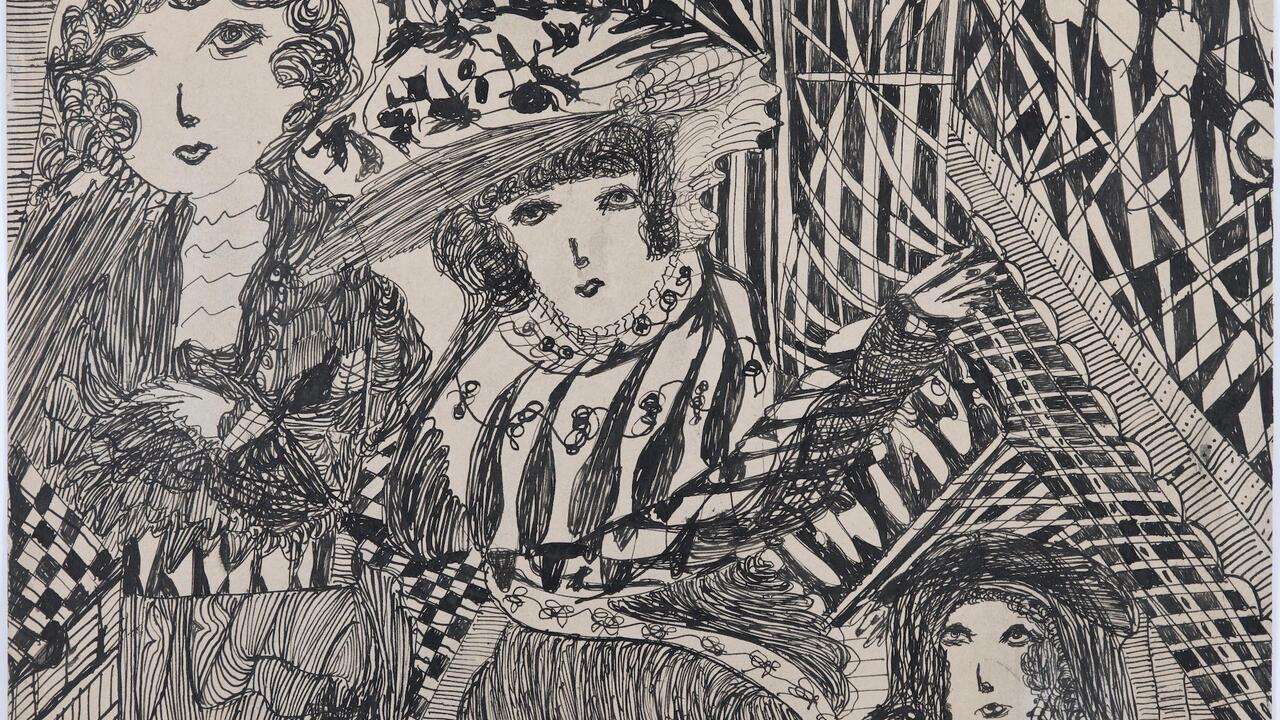Notation
Akademie der Künste, Berlin, Germany
Akademie der Künste, Berlin, Germany

In 1927 the abstract filmmaker and pioneer of ‘visual music’, Oskar Fischinger, fled Munich for Berlin. There he would become known for his special effects and animations as ‘the Wizard of Friedrichstraße’. Prompted by some over-eager debt collectors, he’d left Munich with only his most basic equipment, trudging some 350 miles through rural Germany, shooting single frames along the way, later released as one of his experimental black and white films. Fischinger’s notational, process-driven works are less a forebear of 1970s Conceptualism than those of Marcel Duchamp, yet they provide an obvious precedent to the latter’s chess partner, John Cage, and the subsequent happenings at Black Mountain College.
Artistic preoccupations with the magical and notational – Fischinger’s hypnotic cinema or Cage’s experimental compositions – provided the focus for this ambitious group show curated by Hubertus von Amelunxen, Dieter Appelt and Peter Weibel. Charting the spiritual underbelly of Modernism – art’s exploration of scientific calculations, cinematic experiments, musical notations, sound waves and serial structures – in a narrative that extended through Conceptualism to contemporary art, ‘Notation’ brought together around 450 works by more than 100 artists in a dizzying exhibition set over three expansive gallery spaces. The first room opened with what became a standard juxtaposition of modern and contemporary, coupling Man Ray’s black and white film Le Retour à la raison (The Return to Reason, 1923) – grey twisting papers, perhaps sheets of organ notation, neon lights and shadows playing across a nude female torso – with Anthony McCall’s You and I, Horizontal (2005), a minimal geometric projection installed in a pitch-black space with thick dry ice.
The rest of the first gallery followed a similar course. European and American modernist works, the brilliant detritus of artistic experimentation – such as Étienne-Jules Marey’s albums of smoke currents, his bronze sculptures of geese in flight – sat alongside the iconic Conceptualism of Marcel Broodthaers, Paul Sharits’ structural films and David Bunn’s Subliminal Messages (2004), a project based on the now-obsolete Los Angeles Central Library card index. As well as the obvious big names, the curators included the work of many of Modernism’s less well-known international and interdisciplinary polymaths, such as Stefan Themerson, a Polish poet, novelist, filmmaker, composer and philosopher, whose strikingly contemporary collages from the 1930s worked well next to Weibel’s semiotic collages of the 1970s.
The next room was less successful. Too many artists jostled for attention. Works by Mel Bochner, Cy Twombly, Gordon Matta-Clark, Serge Spitzer and Peter Kubelka sat uncomfortably alongside more recent, weaker works, such as Nam June Paik’s Key to the Highway (1995) or Raimund Kummer’s blue blown-glass sculpture Netz (2000). With the complete absence of any curatorial texts on the show’s themes, or on specific works, the clarity of ‘Notation’ started to muddy. These omissions were a particularly strange curatorial decision given the intellectually ambitious nature of the exhibition, which explicitly engaged in the various academic or conceptual processes that take place before the construction of the final art object. In fact, the absence of curatorial texts had the perverse effect of making radical and complex interventions flat and formalist. For instance, Allan McCollum’s The Shapes Project (2005–6), a wall of small, framed, silhouetted forms, is only engaging if you happen to know that it represents the artist’s system to generate enough unique shapes for every person on the planet. Otherwise it just looks rather banal.
The final gallery space was better, with fewer new-media works and a more sober mood. Tomas Schmit’s Fluxus-based scribbles of the 1970s brought out the best in Sol LeWitt’s textual pieces of the same decade. Appelt’s strangely alluring Glasfilm (2007) appeared as a faded pink chart of DNA or protein chains, and Hanne Darboven’s Partitur (Score, 1990) nodded to Robert Walser’s 1920s Mikrogramm works – minuscule, handwritten texts scribbled on telegrams and letters. Robert Walser, a Swiss poet, novelist and playwright, was one of the many literary and philosophical giants – including Walter Benjamin, Antonin Artaud, Marcel Proust and Bertolt Brecht – whose ‘work’ featured in the exhibition. Intriguing as these were, the inclusion of such objects – conveniently, many were from the Akademie der Künste’s archive – would have been better employed if their relations with the visual art had been more explicitly framed.
Although overwhelming, and a touch chaotic, there was something enlivening about the motley crew of protagonists assembled – a result perhaps of the European perspective of the curators. Much less flat than similar Anglo-American shows to have examined art’s engagement in logic and repetition – such as ‘Beyond Geometry: Experiments in Form, 1940s–70s’ (Los Angeles County Museum of Art, 2004), or ‘Open Systems: Rethinking Art c. 1970’ (Tate Modern, 2005) – ‘Notation’ succeeded in engendering a giddying rush of over-saturated delirium. More archive fever than analytic philosophy, the exhibition forced you to completely rethink calculation and form: as the living, breathing and even anarchistic twins of artistic production.
























